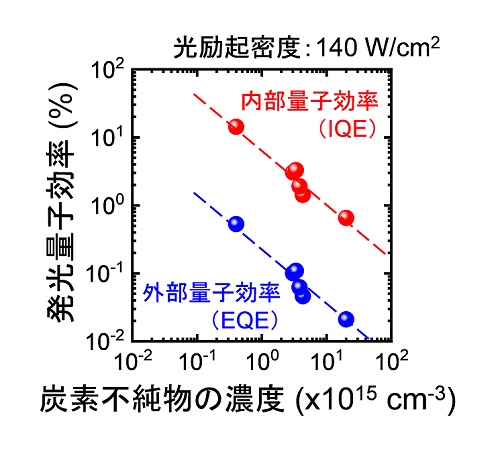
Tohoku Univ: GaN, detecting amounts of carbon impurities: Omnidirectional photoluminescence (ODPL)
Tohoku University: SCIOCS
[Points of announcement]
Established non-destructive and non-contact detection method for carbon impurities in gallium nitride crystals
Detection is possible even with very small impurity concentrations (less than 1 in 100 million)
Contributes to high voltage transistors and light emitting diodes
【Overview】
The Institute for Multidisciplinary Research for Advanced Materials, Tohoku University has succeeded in detecting trace carbon impurities in gallium nitride crystals using the omnidirectional photoluminescence (ODPL) method * 1 in cooperation with SCIOCS Corporation.
Semiconductor device material: GaN
Semiconductor devices are manufactured using various materials depending on the application.
Gallium nitride (GaN) is attracting attention as one of the materials suitable for high-performance electronic and optical devices.
Semiconductor device performance: Factors for deterioration
One of the factors governing the performance of GaN-based high-voltage transistors and high-power LEDs is carbon impurities.
Since even a trace amount of carbon degrades device performance, it must be detected with high sensitivity.
However, impurity measurement technology in semiconductors generally has limitations such as destructive inspection or the need to form electrodes on samples.
Omnidirectional photoluminescence method: detection of impurities
Associate Professor Kojima et al. Applied high-precision luminous efficiency * 3 measurement technology (omnidirectional photoluminescence method) of semiconductor crystals.
Established “Highly sensitive, non-destructive and non-contact detection method for carbon impurities in GaN”.
demonstrated that carbon concentration can be measured quantitatively and non-destructively even with ultra-high purity GaN crystals (concentrations less than 1/200 million).
The results were published online on December 4th in the Applied Physics Express magazine, a scientific journal of the Physics Journal Publication Center (PCPAP), a cooperative internal organization between the Japan Society of Applied Physics and the Physical Society of Japan.
Press release ・ TOHOKU UNIVERSITY-
https://www.tohoku.ac.jp/japanese/2019/12/press20191205-02-ODPL.html